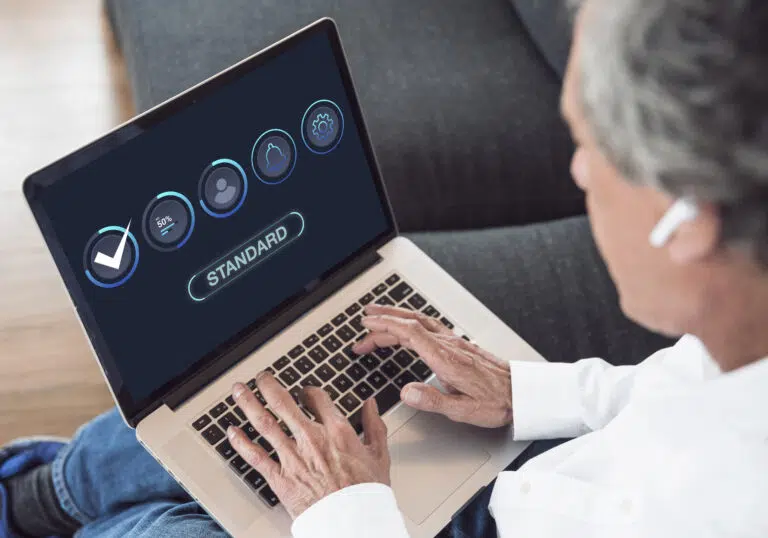The 101 status code represents one of the most critical yet misunderstood HTTP response status codes in modern web development, serving as the gateway for protocol upgrades that power today’s real-time web applications. The HTTP status code 101, officially known as “Switching Protocols,” signals that a server has agreed to switch communication protocols as requested by the client, fundamentally changing how data flows between browsers and servers. Understanding the 101 switching protocols response is essential for developers working with WebSockets, HTTP/2 upgrades, and other advanced web technologies that require protocol transitions.
Modern web development relies heavily on the HTTP code 101 for creating interactive applications, real-time chat systems, live streaming platforms, and progressive web applications. The status code 101 belongs to the 1xx status codes family, which indicates informational responses that require continued action from the client. Unlike other HTTP response status codes that signal completion or errors, the 101 switching protocols code marks the beginning of a new communication protocol that enables advanced web functionality.
Understanding the 101 Status Code in Web Development
1. What Does HTTP Status 101 Mean?
The HTTP status 101 indicates that the server understands and agrees to the client’s request to switch protocols during the current connection. When a client sends an “Upgrade” header requesting a protocol change, the server responds with the 101 status code to confirm the protocol switch, followed by communication using the new protocol specifications.
The 101 switching protocols response is part of the 1xx status codes category, which provides informational responses during the HTTP transaction process. Unlike final response codes, the HTTP code 101 signals an ongoing process where both client and server must adapt to new communication rules and data formats.
- Confirms successful protocol negotiation between client and server systems
- Maintains the existing TCP connection while changing application layer protocols
- Requires both client and server to support the requested protocol upgrade
- Enables real-time communication capabilities beyond standard HTTP request-response patterns
- Forms the foundation for WebSocket connections and HTTP/2 protocol upgrades
2. When Do You Encounter HTTP Status Code 101?
The HTTP status code 101 most commonly appears during WebSocket handshakes, where web applications need real-time bidirectional communication capabilities. Modern web applications use the 101 switching protocols response to enable live chat features, real-time notifications, collaborative editing tools, and interactive gaming experiences.
Common scenarios triggering the 101 status code:
- WebSocket connection establishment for real-time web applications and communication tools
- HTTP/2 protocol upgrades for improved performance and multiplexing capabilities
- Server-Sent Events (SSE) implementations for live data streaming and updates
- Custom protocol implementations for specialized applications and services
- API upgrades that require different communication protocols and data formats
Example: A real-time trading platform uses the HTTP code 101 to establish WebSocket connections, enabling instant price updates and order execution without constant HTTP polling, resulting in 75% faster data delivery and improved user experience.
3. How 101 Switching Protocols Works
The 101 switching protocols process involves a carefully orchestrated handshake between client and server. The client initiates the process by sending an HTTP request with specific upgrade headers, and the server responds with the status code 101 if it supports the requested protocol change.
Protocol switching process:
- Client sends HTTP request with “Upgrade” and “Connection: upgrade” headers
- Server evaluates the upgrade request and available protocol support
- Server responds with HTTP status 101 and confirms the protocol switch
- Both client and server begin communicating using the new protocol specifications
- Connection remains active using the upgraded protocol until termination
Technical implementation of the 101 status code:
HTTP/1.1 101 Switching Protocols
Upgrade: websocket
Connection: Upgrade
Sec-WebSocket-Accept: [calculated-value]
4. 101 Status Code vs Other 1xx Status Codes
The HTTP status code 101 serves a unique purpose within the 1xx status codes family, which includes informational responses that require continued client action. Understanding how the 101 switching protocols differs from other 1xx status codes helps developers implement appropriate error handling and protocol management.
Comparison with other 1xx status codes:
- 100 Continue: Requests client to continue sending request body data
- 101 Switching Protocols: Confirms protocol upgrade and changes communication method
- 102 Processing: Indicates server is processing a lengthy request (WebDAV)
The status code 101 is unique because it fundamentally changes how the connection operates, while other HTTP response status codes maintain the same protocol throughout the transaction.
Best Practices for Handling HTTP Code 101
1. Implement Proper WebSocket Handshake Validation
When working with the 101 switching protocols response, developers must implement robust handshake validation to ensure secure and reliable protocol upgrades. This includes verifying upgrade headers, validating security tokens, and handling potential upgrade failures gracefully.
WebSocket handshake validation strategies:
- Verify “Sec-WebSocket-Key” header and calculate proper response values
- Validate origin headers to prevent cross-site WebSocket hijacking attacks
- Implement proper error handling for failed protocol upgrade attempts
- Check protocol version compatibility before confirming the HTTP status 101 response
2. Handle 101 Status Code in Client-Side Applications
Client-side applications must properly handle the HTTP status code 101 to establish successful protocol upgrades and maintain stable connections. This requires implementing appropriate event listeners, connection management, and fallback mechanisms for unsupported browsers or network conditions.
Client-side implementation considerations:
- Monitor connection state changes after receiving the 101 switching protocols response
- Implement reconnection logic for dropped WebSocket connections and protocol failures
- Handle browser compatibility issues with different 1xx status codes support
- Provide fallback mechanisms for environments that don’t support protocol upgrades
Example: An online collaboration tool implemented comprehensive HTTP code 101 handling, resulting in 92% successful WebSocket connections and 45% reduced server load compared to traditional polling methods.
3. Server-Side Configuration for Status Code 101
Server configurations must properly support the 101 status code and protocol switching capabilities. This includes configuring web servers, load balancers, and proxy servers to handle upgrade requests and maintain connection state during protocol transitions.
Server configuration best practices:
- Configure web servers to support WebSocket upgrades and HTTP status 101 responses
- Implement proper routing for upgrade requests and protocol-specific endpoints
- Handle connection timeouts and resource management for upgraded protocols
- Monitor server performance and connection limits for 101 switching protocols implementations
4. Security Considerations for HTTP Status Code 101
The 101 switching protocols response creates persistent connections that require additional security measures beyond standard HTTP transactions. Developers must implement authentication, authorization, and data validation specifically for upgraded protocol connections.
Security measures for status code 101:
- Implement origin validation to prevent unauthorized protocol upgrade attempts
- Use secure WebSocket connections (WSS) for sensitive data transmission
- Validate all data transmitted over upgraded protocols and connections
- Monitor connection patterns to detect potential abuse or attack vectors
5. Testing and Debugging 101 Status Code Issues
Proper testing of HTTP response status codes, especially the 101 switching protocols response, requires specialized tools and testing strategies. Developers need to verify protocol upgrades work correctly across different browsers, network conditions, and server configurations.
Testing strategies for HTTP code 101:
- Use browser developer tools to monitor WebSocket handshakes and status codes
- Implement automated tests for protocol upgrade scenarios and failure conditions
- Test connection stability and performance under various network conditions
- Validate proper error handling when 101 status code upgrades fail
6. Monitoring and Analytics for 1xx Status Codes
Organizations should monitor the usage and performance of 1xx status codes, particularly the HTTP status 101, to ensure optimal application performance and identify potential issues. This monitoring helps optimize protocol upgrade success rates and overall user experience.
Monitoring considerations:
- Track successful vs failed protocol upgrade attempts and status code 101 responses
- Monitor connection duration and data transfer rates for upgraded protocols
- Analyze user experience metrics for applications using 101 switching protocols
- Identify patterns in protocol upgrade failures and optimization opportunities
Advanced Applications of HTTP Status Code 101
1. Real-Time Application Development
The 101 status code enables sophisticated real-time applications that require immediate data synchronization and user interaction. These applications leverage the 101 switching protocols response to create seamless user experiences that feel responsive and engaging.
Real-time application use cases:
- Live collaborative editing platforms with simultaneous multi-user editing capabilities
- Real-time gaming applications with low-latency multiplayer interactions
- Financial trading platforms requiring instant market data and order execution
- Live streaming applications with interactive chat and viewer engagement features
2. Modern API Design with Protocol Upgrades
API developers increasingly use the HTTP status code 101 to create hybrid APIs that combine traditional REST endpoints with real-time WebSocket connections. This approach enables applications to use standard HTTP for initial data retrieval while upgrading to WebSockets for live updates.
Example: A project management API uses standard HTTP endpoints for initial data loading, then upgrades connections using the 101 switching protocols response for real-time task updates and team collaboration, resulting in 60% improved user engagement and reduced server costs.
Final Thought
The 101 status code represents evolution, not complexity, in modern web development that prioritizes real-time user experiences and efficient communication protocols. While WebSocket and protocol upgrade implementations require careful planning, the 101 switching protocols response enables applications that simply weren’t possible with traditional HTTP request-response patterns alone.
The most successful web applications in 2025 will be those that strategically implement the HTTP status code 101 for genuinely valuable real-time features, rather than using protocol upgrades simply because the technology exists. Understanding 1xx status codes, particularly the status code 101, empowers developers to create more engaging, responsive applications while maintaining security and performance standards that users expect from professional web services.
Ready to implement advanced web technologies and optimize your application’s performance?
Our comprehensive development services specialize in modern web architecture that leverages HTTP response status codes, WebSocket implementations, and real-time communication protocols. From custom development and API design to complete application architecture, our integrated approach helps businesses create cutting-edge web experiences.
Contact Us today today to discover how our services in development, SEO, performance optimization, branding, and digital marketing can transform your web applications with advanced protocol implementations that drive user engagement and business results. Book a consultation call through our contact form to explore how proper HTTP status code implementation can elevate your application’s performance and user experience.





